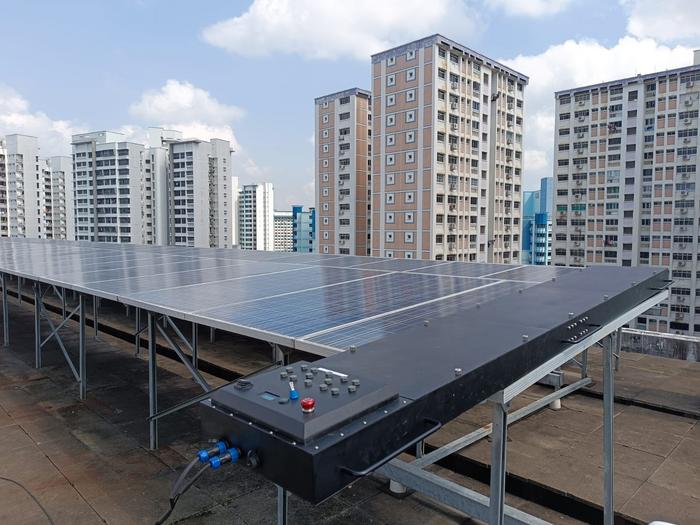Compostable packaging is a type of packaging made from materials that can be broken down by biological processes into nutrient-rich compost. This type of packaging not only reduces waste but also improves the health of the environment.
Compostable packaging has many benefits, including improved sustainability, reduced environmental impacts, and increased consumer convenience. This article explains what compostable packaging is and how does it benefit the environment.
What is Compostable Packaging?
Compostable packaging is a type of packaging that is designed to decompose and return to the earth, either through industrial composting facilities or in a backyard compost pile.
Compostable packaging is biodegradable, meaning it can be broken down by biological processes such as bacteria or fungi into nutrient-rich compost. These materials include plant-based materials like paper, cardboard, and natural fibres, as well as biodegradable plastics.
It is important to note that compostable packaging is different from traditional plastics, which are made from petroleum-based polymers and do not decompose in the environment. This means traditional plastics can take up to 1000 years or more to decompose, contributing to the growing amount of plastic waste in our environment.
9 Ways How Does Compostable Packaging Benefit the Environment?
Compostable packaging has many advantages, including:
1. Reduces the Amount of Waste Generated
Compostable packaging reduces the amount of waste that is sent to landfills and incinerators because it can be composted instead of discarded as trash. This helps reduce the volume of waste produced by individuals and businesses, reducing their environmental footprint.
It also helps to reduce the amount of greenhouse gas emissions generated by landfills and incinerators.
2. Reduces Pollution
Compostable packaging reduces the number of toxins released into the environment as it breaks down, eliminating or minimizing the impact of pollutants from ordinary packaging materials.
This helps keep the air, soil, and water clean and healthy for both people and the planet.
3. Reuses Resources
Compostable packaging uses fewer resources than traditional packaging because it is made from renewable and sustainable materials such as paper and cardboard. This helps reduce the demand for fossil fuels, which are finite resources.
4. Saves Energy
Compostable packaging requires less energy to manufacture since it is made from renewable and sustainable materials that do not require intensive processing like traditional plastics. This helps reduce our dependence on non-renewable sources of energy.
5. Helps Reduce Greenhouse Gases
Compostable packaging helps reduce emissions of greenhouse gases, which contribute to global warming. This is because compostable materials can be broken down in anaerobic environments without the release of methane, a potent greenhouse gas.
How Compostable packaging reduces emissions of greenhouse gases?
Compostable packaging helps reduce emissions of greenhouse gases by replacing petroleum-based plastics with renewable materials. This reduces the number of fossil fuels used in the production process and lowers the demand for these limited resources.
The composting process also reduces methane emissions from landfills because it occurs in anaerobic conditions and does not produce the same amount of methane that traditional landfill decomposition does.
In addition, compostable packaging is generally lighter than traditional plastic packaging and has a smaller carbon footprint when disposed of properly.
6. Promotes Sustainable Agriculture
By using compostable packaging, businesses and consumers can help support sustainable agriculture, which helps preserve the environment and reduce pollution.
Compostable packaging is made from renewable materials like paper and cardboard that can be composted and used as a natural fertilizer to help support healthy soil.
7. Improves Consumer Convenience
Compostable packaging improves consumer convenience by providing a more convenient way to dispose of packaging materials. Instead of having to take the packaging to a recycling centre or landfill, consumers can simply compost their packaging at home.
8. Improves the Nutrient Cycle
Compostable packaging helps improve the nutrient cycle by breaking down and releasing nutrients into the soil. This helps promote plant health and growth, improving soil quality for better food production.
How compostable packaging improves the nutrient cycle?
Compostable packaging helps improve the nutrient cycle by releasing nutrients back into the soil. As compostable materials break down, they release valuable nutrients like nitrogen, phosphorus, and potassium, which are essential for healthy plant growth.
These nutrients help promote healthy soil structure, allowing plants to take up more water and other vital substances needed for their growth and development.
The compostable materials also create beneficial organisms like bacteria and fungi, which help break down organic matter and produce nutrients that plants need. This helps improve the soil’s fertility, promoting healthier and more productive crop yields.
In addition, the increased microbial activity in the soil helps to improve its structure and water-holding capacity, making it more resilient against droughts and floods. Compostable packaging also helps reduce the number of synthetic fertilizers used on crops, reducing the pollution they can cause to nearby water sources.
Finally, compostable packaging helps close the nutrient cycle by eliminating the need for chemical fertilizers or other synthetic inputs that would otherwise be released into the environment, further contributing to pollution.
9. Increases the Use of Renewable Resources
Compostable packaging increases the use of renewable resources by using materials such as paper and cardboard that can be recycled or composted. This reduces dependence on finite resources like oil, helping to conserve these important resources for future generations.
Compostable packaging provides many benefits to the environment and can help reduce our dependence on non-renewable resources. By using more compostable packaging, businesses and individuals can make a positive impact on the environment and help reduce their environmental footprint.
Conclusion
Compostable packaging is one of the best ways to reduce our environmental impact and support sustainable agriculture. By using compostable packaging, businesses and consumers can help reduce waste, conserve energy, reduce greenhouse gas emissions and promote healthy soil.
Compostable packaging also provides consumers with a more convenient way to dispose of their packaging materials without having to take them to a recycling centre or landfill. With these benefits, compostable packaging is an excellent choice for businesses and consumers who want to reduce their environmental impact.







